
Activity Reports
Let the water pass through – clearing drains
July 7, 2011
A new role of volunteers in Ishinomaki is clearing mud from drains and waterways.
As almost four months has passed since the disaster, the role of volunteers in the affected areas is becoming more diverse, both for Peace Boat and other active organisations. The first stage of clear up operations has been helping to restore houses flooded with water or mud, and shops infiltrated with mud and debris. In the central areas of Ishinomaki where Peace Boat is operating, these activities are of course still continuing, however the end is finally starting to come into sight.
There, a new issue which has arisen is clearing the drains and waterways of the city.
In Ishinomaki, each side of most roads has a U-shaped drain, which is filled with household water waste as well as rainwater. Many places within the city still do not have any infrastructure such as electricity, water or gas, however in the central areas infrastructural reconstruction is gradually underway. However, even when running water is restored, the fact that most of these roadside drains are still filled with mud, sludge and debris has meant that water cannot be used in many cases.
The large highways and roads are being restored by governmental authorities, and initially the drains were also to come under this programme. However, the smaller roads and drains around homes used by citizens are not included in this plan. Thus, cleaning of such areas by volunteers and the local population is now underway.
First, the manhole covers over these drains are lifted using special machinery. Each of these are different, however they are mad of concrete with an average width of 10-20 cm, and a weight of between 15-20 kg. Once removed, two volunteers remove these covers together.
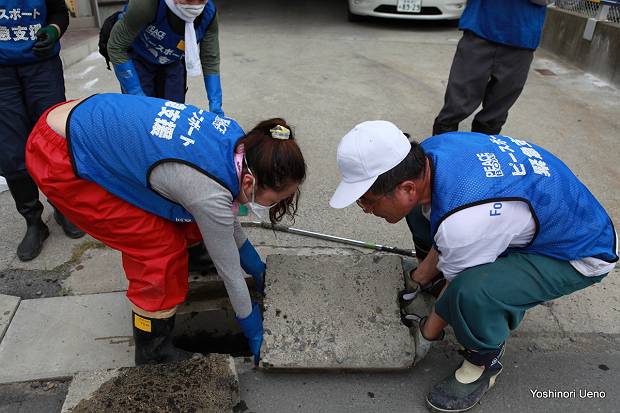
Once the covers are lifted, the huge amounts of mud and sludge amassed in the drains is clear.
The mud in the picture below is one of the better situations – there are many places which are so full of mud that the bars and covers cannot even be removed.
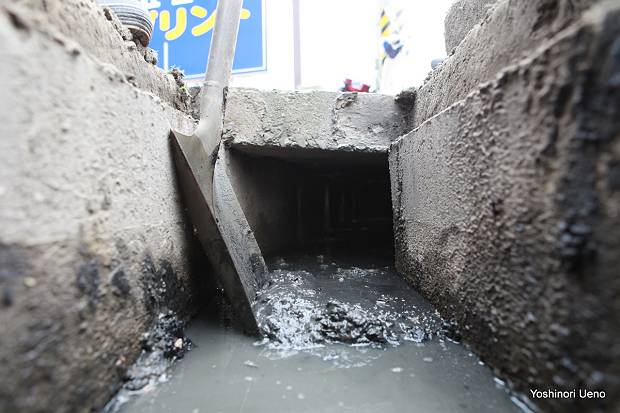
The mud amassed in these drains is removed with shovels.
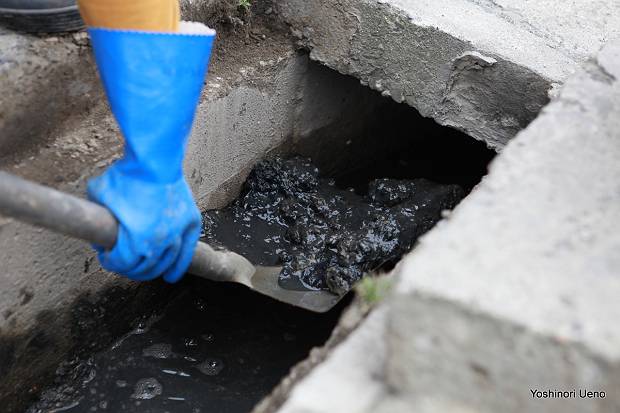
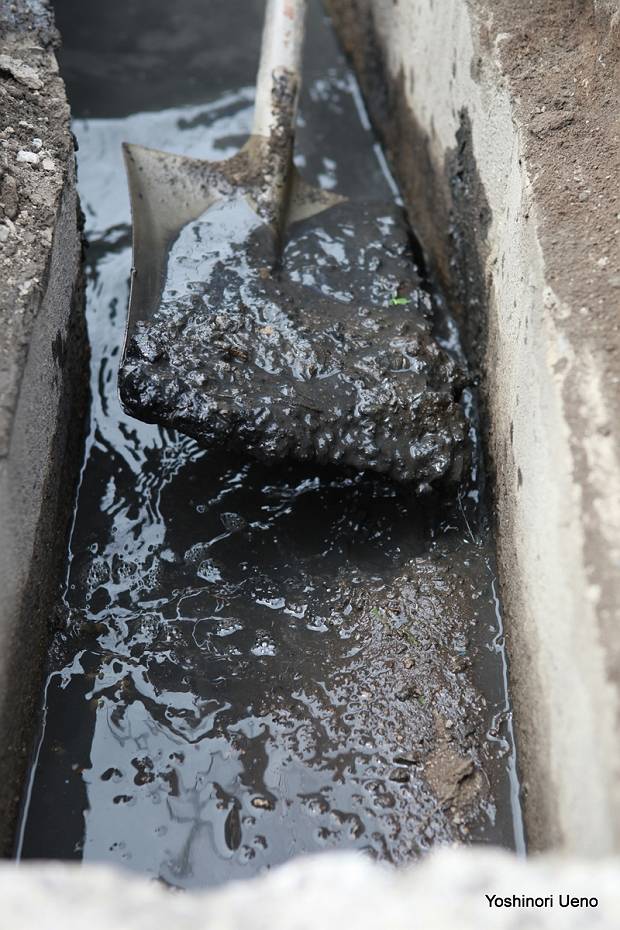
Once lifted, it is transferred to special bags to hold this mud. It is important not to overfill them, or else they are too heavy to lift.
As oil and other materials is also mixed up in the mud, it is extremely heavy. Thus the bags are filled only 40-50%, depending on contents.
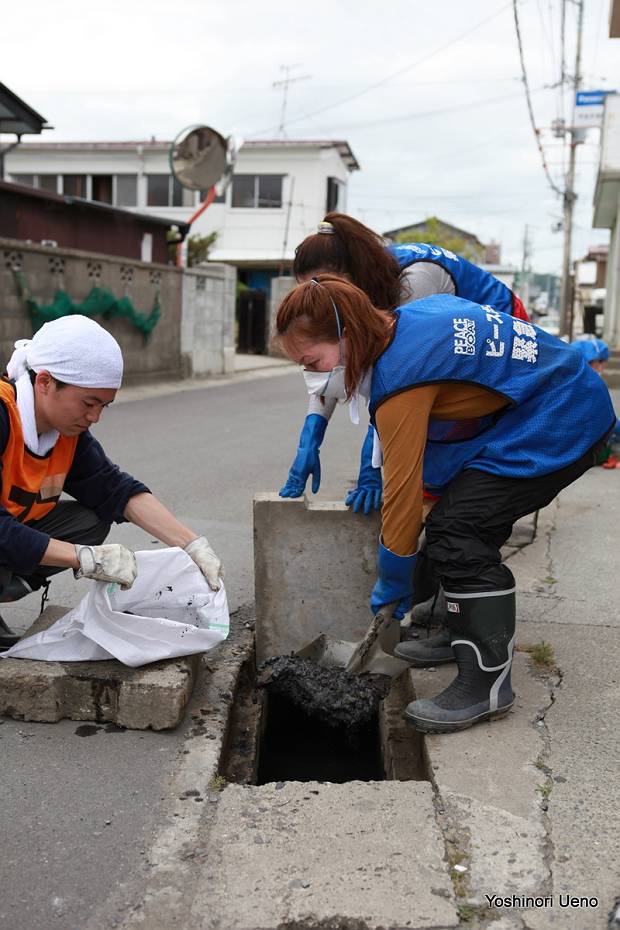
Once transferred to the bags, a one-wheeled car known as a “cat” picks up the mud to take it to the city’s gathering place.
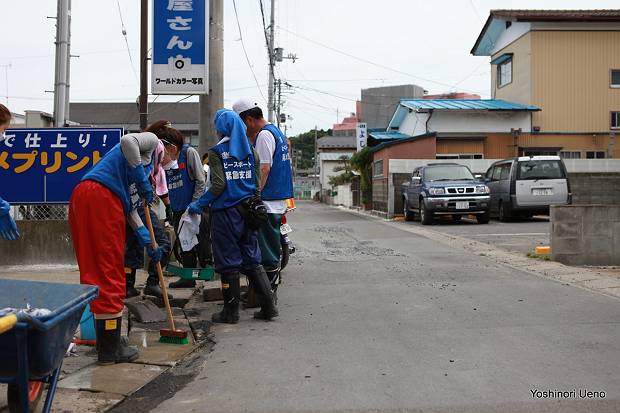
When these efforts are undertaken by one small team as in the above photo, each volunteer has a specific role to ensure efficiency and smoothness.
After the mud removal is complete, the cover is once more placed on the drain, and the area above is cleared of any remaining mud using deck brushes and other tools, to ensure the area is clean. According to one of the volunteer leaders, “it is our job to work until it is just as clean as it was before the tsunami!”
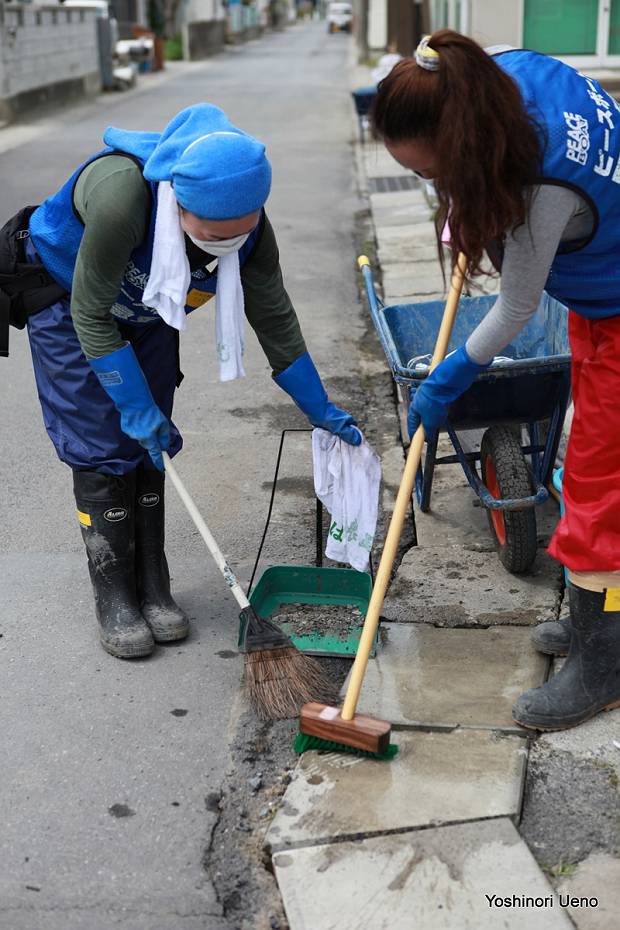
The mud is from there loaded onto dump trucks, and taken to the specific disaster debris garbage area allocated by the city authorities.
The photo below is of the number of bags collected by this team during one morning in a specific area.
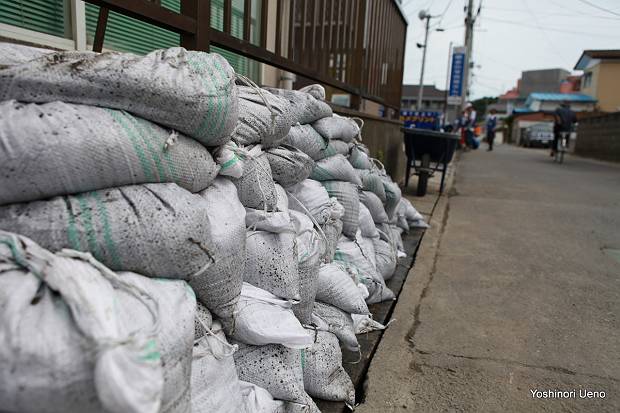
Of course, these drains continue from one area to another, and so even when one area is cleared, the following areas must also undergo the same treatment for the water to be able to flow properly. Thus, the areas in which volunteers are carrying out this work are increasing day by day.
Peace Boat continues to hope for as many volunteers to join the recovery efforts as possible. With summer vacation approaching, we hope that many students and education professionals will also be able to participate. The requirements for volunteers, including financial and material have also been revised greatly recently, hopefully making participation more accessible to many more people.
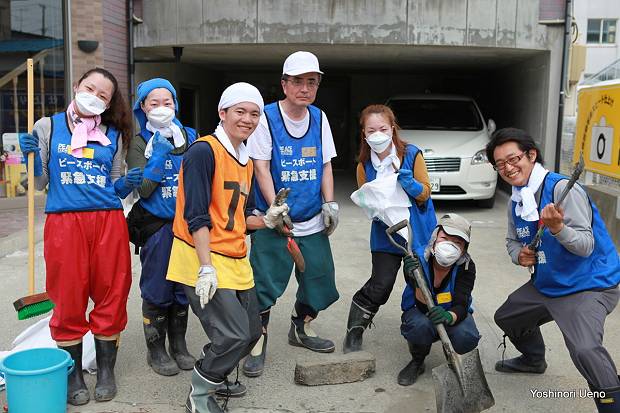 ALL PHOTOS BY UENO YOSHINORI
ALL PHOTOS BY UENO YOSHINORI



